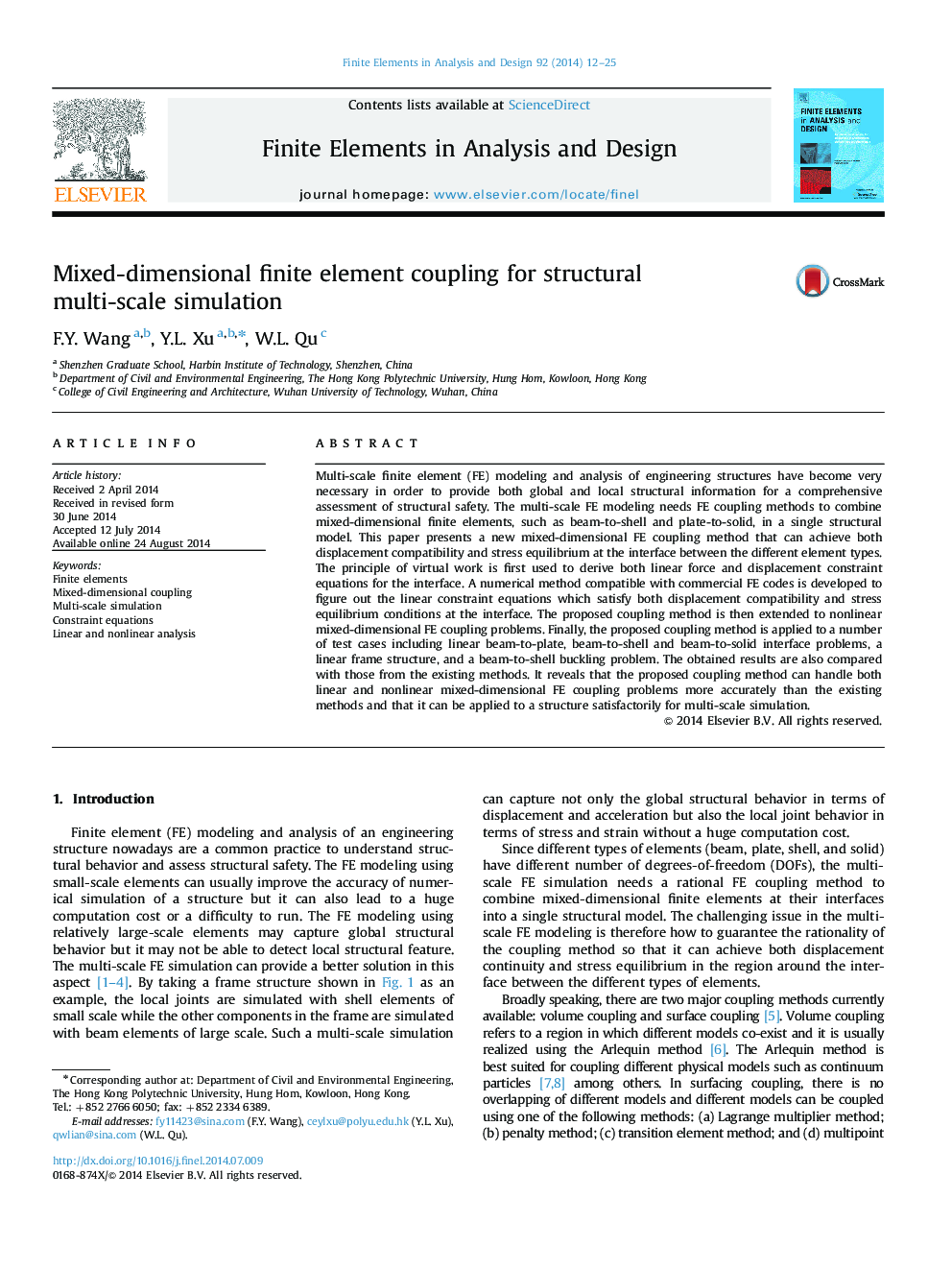| Article ID | Journal | Published Year | Pages | File Type |
|---|---|---|---|---|
| 514221 | Finite Elements in Analysis and Design | 2014 | 14 Pages |
•A new mixed-dimensional coupling method is proposed for multi-scale simulation of a structure.•The principle of virtual work is used to derive force and displacement constraint equations.•A numerical method with commercial FE codes is developed to figure out the constraint equations.•The proposed method is applied to a number of test cases to verify its accuracy and robustness.•The proposed method can handle coupling problems more accurately than the existing methods.
Multi-scale finite element (FE) modeling and analysis of engineering structures have become very necessary in order to provide both global and local structural information for a comprehensive assessment of structural safety. The multi-scale FE modeling needs FE coupling methods to combine mixed-dimensional finite elements, such as beam-to-shell and plate-to-solid, in a single structural model. This paper presents a new mixed-dimensional FE coupling method that can achieve both displacement compatibility and stress equilibrium at the interface between the different element types. The principle of virtual work is first used to derive both linear force and displacement constraint equations for the interface. A numerical method compatible with commercial FE codes is developed to figure out the linear constraint equations which satisfy both displacement compatibility and stress equilibrium conditions at the interface. The proposed coupling method is then extended to nonlinear mixed-dimensional FE coupling problems. Finally, the proposed coupling method is applied to a number of test cases including linear beam-to-plate, beam-to-shell and beam-to-solid interface problems, a linear frame structure, and a beam-to-shell buckling problem. The obtained results are also compared with those from the existing methods. It reveals that the proposed coupling method can handle both linear and nonlinear mixed-dimensional FE coupling problems more accurately than the existing methods and that it can be applied to a structure satisfactorily for multi-scale simulation.
